We’ve spent five years waiting, like Reapers lurking in dark space, but Mass Effect: Andromeda has finally dropped out of warp and is ready to be downloaded onto planetside hard drives. But is the PC version primed for flawless atmosphere breach, or does it need further calibrations? We’ve analysed every preset, setting, and option to find out just how well Andromeda runs on PC. Welcome, Pathfinder, to the PCGamesN tech review.
Need to know how to fight aliens? Learn all there is to know with our Mass Effect: Andromeda combat guide.
Our tech reviews are written to offer you the broadest picture possible, focusing on hardware similar to what the majority of players have installed in their machines. We test the game on all graphical settings using an i5 powered rig with 8GB of RAM, and try to hit 60 fps with four of the most popular graphics cards. Even if your PC is not identical to our test set ups, you should still be able to estimate the performance levels you can expect from your own machine.
Graphics options
Mass Effect: Andromeda gets off to a bumpy start with its graphical settings menu, which feel a little on the amateur side. Forgetting that they don’t feel very Mass Effect in aesthetic, they make terrible use of screen space and offer very few tooltips to help explain what each setting does. The list scrolls slowly, and requires multiple scrolls to see the entire list. It’s a pretty poor layout.
Thankfully the menus do include everything required to tailor Andromeda to your hardware. 12 different settings feels a little on the short side, but among them are the vitals like texture detail and filtering, terrain and vegetation quality, meshes, and lighting and shadows. Anti-aliasing comes in the form of FXAA and Temporal AA, while ambient occlusion is offered up in SSAO, HBAO, and HBAO Full flavours.
There’s a few personal preference settings such as an on/off toggle for film grain and chromatic aberration. You can also scale the resolution, maintaining your native resolution for the overall image but rendering the game at a lower setting.
Andromeda will auto-detect graphical settings for you, and it generally seems to select sensible, well performing options. You can take control yourself with the presets, opting for low, medium, high, or ultra. It’s important to note that when using these presets the game will use resolution scaling as a tool; at low the game will render at 720p and medium at 900p. If you’d rather stay at native resolution you’ll need to make a custom setup in order to prevent the scaling.
Outside of graphic options there’s a solid set of control settings, including a complete key rebinding menu and mouse sensitivity sliders for every movement function (on foot/in vehicles etc). You can also ‘multiply’ the field of view, making the viewing area larger in-game.
Graphics analysis
Tested on an Intel i5 6500k @3.2GHz, 8GB of RAM, Nvidia GTX 1060, Windows 10
For our graphics analysis we compare screenshots taken on the four standard presets of ultra, high, medium, and low. To apply any settings changes you’ll have to reset the entire game. Most modern games require exiting to the main menu, but it seems excessive to require a complete reboot. As you can imagine this is incredibly annoying when making several minute changes to maximise frame rates.
Ultra
Andromeda is a new galaxy, and BioWare have made a concentrated effort to make that apparent with the look of the game. This feels like a true generational leap ahead of Mass Effect 3, with beautifully bumpy rock formations, dense (and very weird) plant life, and mists that hang close to the ground. The lighting work is similarly strong, making the skyboxes feel genuinely sunny and offering dark, soft shadows in the more shady areas of the scene. Things look slightly hazy and unfocused in the mid-distance, but overall Andromeda produces a beautiful image on ultra settings.
This most demanding preset runs well on our GTX 1060-powered rig, too. With an average frame rate of 65 fps and a low of 47, it’s a very smooth and stable performance. It should be noted that we use the 6GB variant of the GTX 1060; BioWare’s tales of 30 fps with the same card applies to the 3GB version.
High
The high preset retains most of the quality of ultra with just a few minor changes to help boost performance. Immediately noticeable is the dramatic decrease in mist effects, although what remains still looks authentically wispy. Other changes require a closer look, such as the reduced tessellation in the rock surfaces. You can see on the floor area where certain ridges have been removed and smoothed over, but you certainly need to inspect thoroughly to find the changes.
These small changes result in an equally small performance boost; an average of 70 fps and a low of 54 fps.
Medium
A more obvious change in quality can be seen on the medium preset, most obviously in the lighting. It’s less complex, with there being a more obvious contrast between light and shadow. The terrain has also been reduced in quality, with even more of the small bumps and ridges having been smoothed out. The overall line work is far fuzzier than at high, with the Ryder’s armour looking notably poorer. While some of this is due to reduced anti-aliasing, the medium preset also scales the image down to 900p, which certainly does it no favours.
You’d hope that such concessions would result in a large performance jump, and thankfully it does. On average medium will net you 125 fps, with a low of 70 fps.
Low
At the lowest end of the graphical spectrum Andromeda looks a bit of a mess. With its blurry image and smoothed-out models it takes on the appearance of a voxel-based game, or a film viewed through a jar of incredibly dense transparent goo. Any detail is eradicated by the combination of low-grade textures and the 720p resolution, and the lighting work feels incredibly artificial.
As you’d expect, there’s a healthy performance boost for such a downgrade. Our rig managed an average of 163 fps, and bottomed out at 88 fps. I couldn’t recommend using low though; it’s not just rough-looking, it destroys the cinema of the game.
Performance benchmarks
To see how Mass Effect: Andromeda performs on various hardware setups, we have tested the game on four graphics cards; two from Nvidia, and two from AMD. We’ve sampled the most popular cards from the current and last generation of GPUs in order to offer the most useful information.
All four cards were tested at ultra settings, with every texture option up as high as they’ll go and every graphical effect turned on. For the test we played a three-minute sample that involved dynamic weather effects, running, climbing, cutscenes, and combat. The same section is repeated three times in order to find an average.
In the graph below you can see how all four cards perform.
As mentioned previously, there’s a very clear generational leap apparent in Andromeda’s graphics, and you can see that an older card like the AMD R9 380 struggles to keep up. An average of 37 fps is still playable, of course, and ultra will look far better than the console alternative. The current gen RX 470 naturally fares much better, but as one of the lower end cards available at the moment it doesn’t quite manage to hit 60 fps with all the bells and whistles turned on.
The popular GTX 1060, our main testing card, performs admirably at an average of 65 fps. It’s good news for the previous generation of Nvidia cards too, with the 970 being within four frames of 60 fps.
Several hours of play confirms that BioWare have created a very solid build with Mass Effect: Andromeda, but it’s worth saying that I did experience problems the first time I booted the game. I experienced frame rates as low as single figures, with combat being unplayable. Thankfully after rebooting my PC these issues disappeared and have never returned, not even with the use of a significantly less powerful GPU.
How does Mass Effect: Andromeda run in 4K?
Andromeda runs solidly at 1080p, but what if you own a 4K display? Our UHD test rig – rocking an i7 6700K CPU, an Nvidia GTX 1080, and displaying on an Acer Predator 4K monitor – copes as well as can be expected. At a huge 3840 x 2160 resolution on ultra settings, Andromeda runs at an average of 36 fps, and a minimum of 27 fps. We wouldn’t expect close to 60 frames on a single GPU, but for a game as effects-heavy and detailed as Andromeda, it’s nice to see that it maintains a playable frame rate. It’s worth noting that our preset analysis found very little difference between high and ultra, so if you’re playing in 4K you should certainly consider dropping down a notch to improve performance.
How to run Mass Effect: Andromeda at 60 fps
If you’re running one of the cards we’ve tested you’ll no doubt be making a decision right now: do you opt for the most beautiful image and make do with a lower frame rate, or settle for nothing less than 60 fps no matter the graphical cost? If you’re planning on doing the latter, we’ve got tips on how to achieve the gold standard frame rate on our selection of four test GPUs.
For a breakdown of how to run Mass Effect: Andromeda at 60 fps, see our settings guide below.
Nvidia GTX 970
If a 970 is your weapon of choice, you’ll be pleased to hear there’s very little you need to do to squeeze 60 frames out of it. Simply using the high preset will ensure a smooth experience with almost all of the visual tricks still running.
Nvidia GTX 1060
A 1060 GPU is more than capable of hitting 60 fps at ultra, so just keep those settings turned up as high as they go. If you find more taxing areas are pulling your frame rate down into the 50s, reducing one or two of the graphical elements like vegetation or terrain detail down a setting should keep you in the smooth.
AMD Radeon R9 380
The older R9 380 struggles with Mass Effect: Andromeda, but that doesn’t mean you can’t strike a decent balance between visuals and frame rate. Start by applying the high preset, but then adjust it to custom in order to fine tune it. You’ll want to drop anti-aliasing down to FXAA, and set post processing, lighting, shadows, effects, mesh, and vegetation down to medium. Shaders need to go a little further down, so drop those to low. It’s a more complicated setup than the other cards, but this combination will net you an average of 60 fps while looking as pretty as possible.
For a more detailed breakdown, see our R9 380’s in-game graphics menus here and here.
AMD Radeon RX 470
Our lower-end current generation card can run Andromeda at 60 fps with a few adjustments. Using the high preset as a base, by lowering post processing, lighting, and vegetation to medium you can achieve a very playable frame rate that still looks pretty swish.
For a more detailed breakdown, see our RX 470’s in-game graphics menus here and here.
Conclusion
Before I got my hands on Mass Effect: Andromeda I already had it in my head that this wasn’t going to be a great PC game. Excited as I was for exploring a new BioWare story, the unusually high recommended specs and talk of it running at 30 fps had me worried.And, as previously mentioned, things didn’t get off to a good start. While the opening scenes on the Ark were smooth, the moment I went planetside and started engaging in combat or doing anything requiring fast movement the frame rate plummeted to a crawl. I feared that I really did need 16GB of RAM and a 1070 to run Andromeda, but luckily a system reboot later and those issues were gone and I was never able to replicate them.
Andromeda, while having a more ‘concept art in motion’ look rather than photorealism, is a detail-dense and demanding game, but it runs great on mid-range modern hardware like the GTX 1060. Older and lower-end cards will struggle a little, though. This isn’t the kind of game you’d upgrade your GPU for, but thankfully the settings offer enough adjustment room to squeeze 60 fps out of weaker components.
BioWare could certainly have put more PC-centric effort into Andromeda; there’s no DirectX 12 here, and the menus feel as if they’ve been pulled from a console rather that created bespoke for our platform. Compared to the games Ubisoft have been putting out recently, Andromeda really pales as a PC game.
But a few clunky menus aren’t the end of the world, and in-game your character controls perfectly well with a mouse and keyboard. Overall it still feels like a game that was intended to be played with face buttons on a controller, but if you’re used to using the number keys to trigger abilities you’ll be very much at home here. Combined with the lovely look of the environments and the solid performance, there’s really no reason not to opt for the PC as your weapon of choice when it comes to Mass Effect: Andromeda.

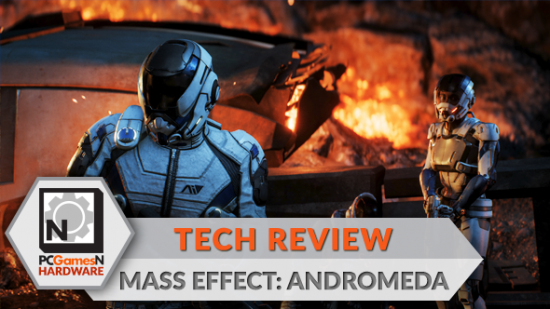
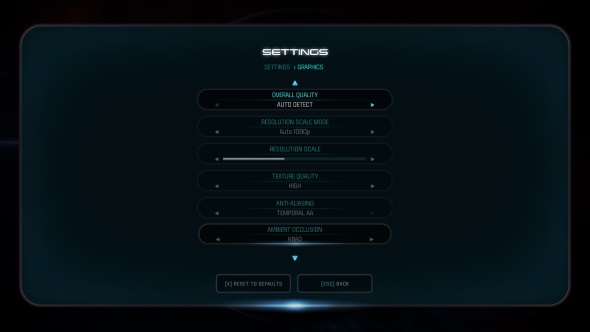 (
(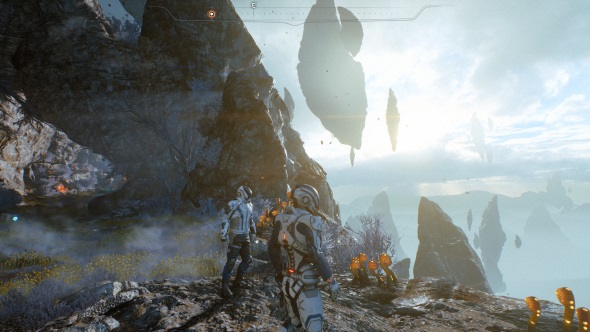 (
(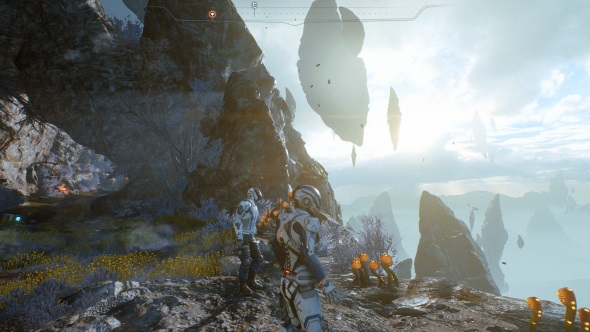 (
(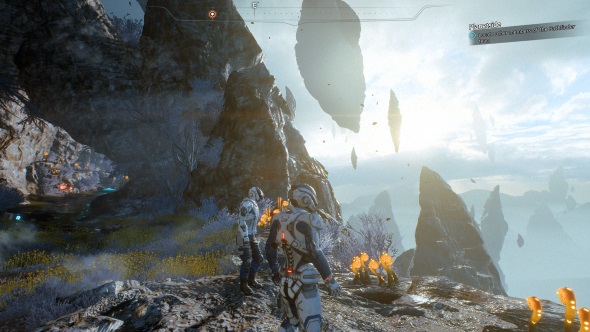 (
(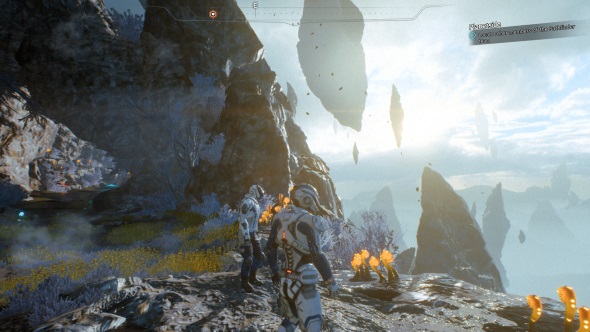 (
(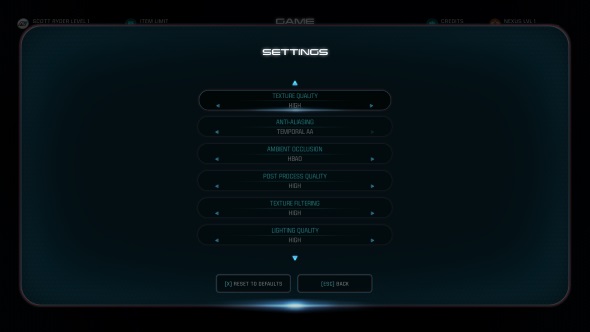 (
(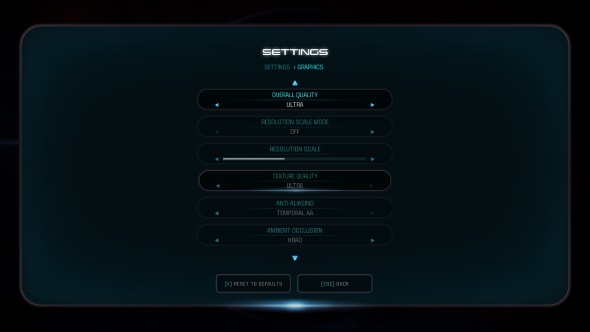 (
(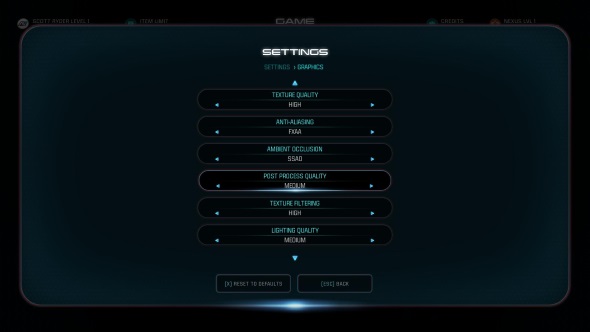 (
(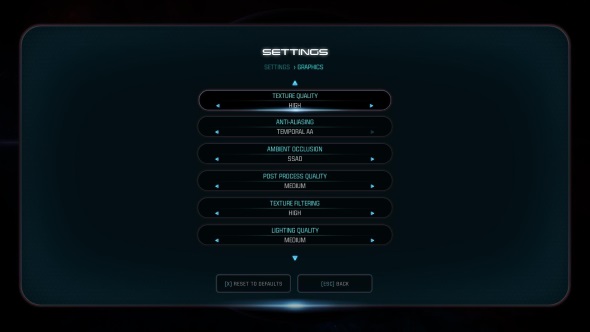 (
(